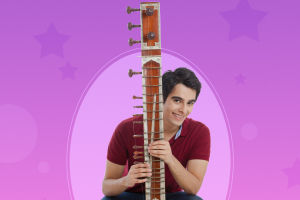Violin
The violin is a stringed instrument. The violin is a bowed string instrument and is the most important instrument in the string section of modern orchestras.
As the most substantial of modern string instruments, the violin is mainly characterized by its brilliant sound, its high degree of virtuosity, and its rich, wide-ranging expressiveness. The violin is also known as the queen of instruments.
The violin is the smallest and highest-pitched of the violin family, the larger violins being the viola, cello, and double bass. The violin is a stringed instrument that produces its sound through the friction between the strings and the bow.
The violin was made in its modern form not purely for aesthetic reasons, but for acoustic and performance reasons. The top and back of the violin are curved so that they resonate well and sound bright; the waist of the instrument is narrow so that it is easy to play high positions and bass strings; the top and back are inlaid to prevent the wood from cracking and to contribute to the sound quality of the instrument.
The top and back are supported by a sound post in the middle, the position of which has a marked effect on the tone of the violin. The bass beam is glued under the left side of the top, which is both reinforcing and acoustic.
The surface of the violin is painted too hard, too soft, or unevenly, which can be detrimental to the sound quality. When the bow vibrates against the strings, it causes the top to vibrate through the horse and the back plate to vibrate through the sound post.
The E string vibrates less while the G string vibrates more, which causes the bass beam to vibrate more and causes the resonance box to vibrate. The ability to bring out the full sound of the instrument depends on the strings and their tension, the quality of the horse, and the pressure and speed of the bow movement.
To bring out the full range of sound qualities of the instrument, the player's bowing, fingering, and playing techniques such as vibrato and strumming are also required.
The violin, like the piano, in which the body parts of the eye, brain, arm, and fingers are harmonised and the independence of the fingers is greatly trained. However, one of the characteristics of the violin is that it is very difficult to learn at the beginning and the learning process can be very slow.
Compared to keyboard music, where you can get a more stable tone, the first year or two of the violin is the hardest, even after two or three years of learning it is still like sawing wood. The violin is also the only Western instrument that cannot be played quickly, and many learners give up because they can't get past the first year or two.
However, once learned, the violin is a fascinating instrument, and the fact that the violin is given the lead role in an orchestra is a testament to its status among other instruments.
In addition to this, the violin's portability and ease of presentation are the reasons why many parents and students prefer to learn it. The sound of the violin is very beautiful, bright, and sometimes mournful.
The sound of the violin has a continuity, similar to the qualities of the human voice. The violin is very expressive as a soloist and as a concerto.


